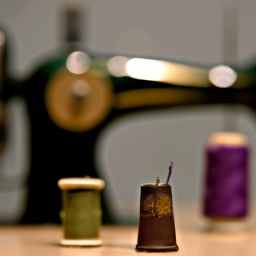
The History of Sewing in Fashion

Sewing has played an integral role in fashion throughout history. From the earliest garments stitched together by hand to the modern advancements of sewing machines and digital technology, the art of sewing has continuously evolved, shaping the way we dress and express ourselves through clothing.
The origins of sewing can be traced back to prehistoric times when early humans used bone needles and animal sinew or plant fibers to sew together pieces of animal hide, creating garments to protect themselves from the elements. As civilizations developed, so did the techniques and tools used for sewing.
A significant milestone in the history of sewing was the invention of the first mechanical sewing machine in the early 19th century by French tailor Barthélemy Thimonnier. This breakthrough revolutionized the fashion industry, allowing for faster and more precise stitching, and contributing to the mass production of clothing. Over time, sewing machines became more refined and accessible, enabling fashion designers to bring their visions to life.

The Industrial Revolution of the late 18th and early 19th centuries further propelled the role of sewing in fashion. Large-scale factories emerged, employing seamstresses and tailors who sewed garments on behalf of renowned fashion houses. With the invention of sewing machines, these factories were able to increase productivity and meet the growing demand for fashion.
As fashion continued to evolve, sewing techniques became more intricate. The rise of couture and luxury fashion saw the introduction of hand-sewn embellishments and delicate embroidery, showcasing the skill and artistry of seamstresses. Techniques such as draping, pleating, and darting were perfected, allowing for the creation of flattering and well-fitted garments.
In recent years, advancements in digital technology have influenced the world of sewing and fashion. Computerized sewing machines equipped with programmable patterns and automated features have made it easier for designers to experiment with complex designs and bring their concepts to fruition.

Moreover, the rise of online communities and platforms dedicated to sewing has made it easier for aspiring fashion enthusiasts to learn and share their creations. Sewing has become not only a practical skill but also a form of self-expression and creativity.
The history of sewing in fashion showcases the ongoing innovation and progression of the industry. From humble beginnings to the integration of cutting-edge technology, sewing has remained a fundamental aspect of fashion, ensuring that garments are not merely functional, but also inspiring works of art.
Whether it is the delicate stitches of a hand-embroidered couture gown or the precise seams of a digitally sewn ready-to-wear piece, sewing remains an essential tool that continues to shape the world of fashion.





Wow, interesting read!
Sewing has been a major part of fashion for centuries, creating innovations and artistic pieces that have been cherished and admired for generations. From traditional garments to stylish modern looks, understanding the history of sewing in fashion provides insight into the development of various trends.